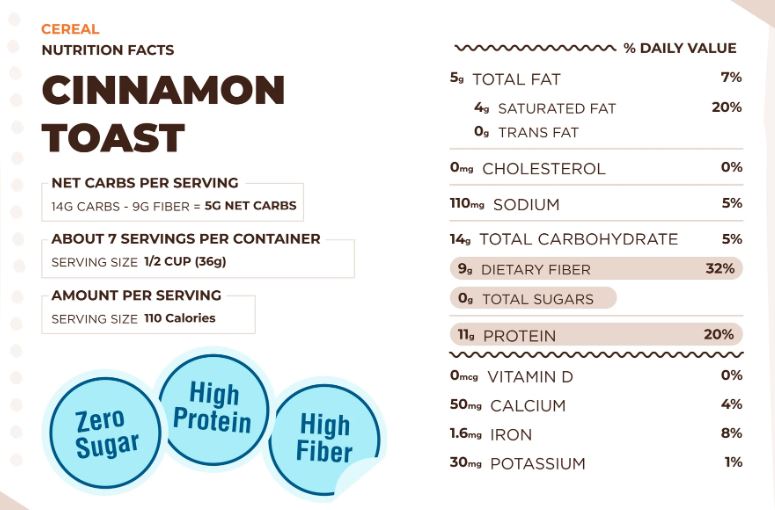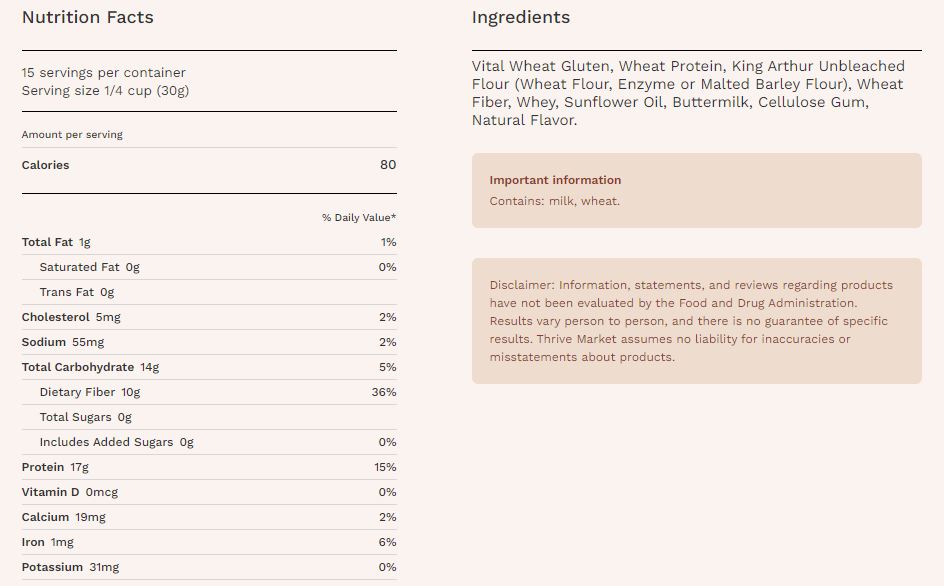As a professional in the nutrition industry and an expert in Functional Nutrition and Medical Nutrition Therapy, I am constantly seeing what I’ll call “dirty” nutrition marketing tactics. When you don’t feel good in your body because of challenging symptoms or discouragement around weight loss issues, there’s an emotional impact. Marketing departments know this and use tactics that hit on the pain points of potential customers. The advantage they have over you is they know that you aren’t an expert in what they’re trying to sell you…but WE are.
In our last article on marketing tactics, we shared some of the misleading marketing tactics out there regarding gluten-free products, why you would potentially need to be on a gluten-free diet, and how to safely navigate GF products at the grocery store.
We’ll continue the topic by delving a little more into problematic marketing tactics you might find in the grocery store, when you’re choosing which products to buy. Today, we’re addressing the labeling tactics of products stating they’re keto-friendly, “natural” products, and plant-based or vegan foods.
Labeling Laws 101
By law, there is certain product information that is required to be on a package label. These include:
- Statement of identify (the item’s name)
- Net quantity of contents (weight or number)
- Nutrition Facts label
- Ingredients list
- Allergen declaration (need to include the nine major food allergens: milk, egg, fish, shellfish, tree nuts, wheat, peanuts, soybeans, and sesame)
- Contact info for the manufacturer
Any other additions to the front, back or side of the package are voluntary (5). Notice there’s no claim about what type of diet or eating pattern the product is good for. There are also no health claims that are required, and there are even laws around what type of health claims a manufacturer can make about a product.
The Problem with Specially Labeled Diet Foods
While there may be some benefit to product labels, particularly ones such as gluten-free, dairy-free or plant-based if one is following an eating pattern to heal a medical issue, the major problem with any type of diet-related product labeling or claims is that it speaks to the psychology of purchasing. Inherently, our minds see claims such as “gluten-free” or “paleo” and we inherently begin to think that a product must be better in some way than a similar product sitting next to it that is not labeled. Additionally, over time when we see these diet-related marketing tactics again and again, we start to believe that because the product is designed for a legitimate diet (with medical reasons or not), then the product must be healthy.
The classic example of this is in the gluten-free product category. When I first had to remove gluten from my diet more than a decade ago, some of the most common questions I received from peers was whether I then lost a bunch of weight after removing gluten. It was confusing at first because:
- I didn’t need to lose weight
- I was following the diet to feel better after struggling with GI pain and widespread symptoms for most of my life, and
- When someone is consuming gluten and their body is intolerant and not absorbing any nutrients, it’s actually more common to gain weight back after removing the food that’s causing pain and inflammation.
And related to the idea that because it’s labeled to fit a certain diet, then it must be healthy, any product that comes in a package that has any sort of labeling on it, including a nutrition facts label, is more than likely processed in some way, and the majority of your most nutritious food choices at the grocery store are the ones that don’t have any package and minimal labels – foods like vegetables, fruit, minimally processed whole grains, beans, legumes, lean proteins, and nuts and seeds.
It’s more than likely that if any of these products come housed in a diet label such as the examples below, then it’s a product that has added processing that’s been done to it, such as adding a flavoring agent or turning it into a processed food such as a crackers, chips, cookies, cereals, prepared foods, a ready-to-eat meal, etc. And all of those processed foods are a less healthy choice than their whole food version.
So just because a product has a trendy diet label, that does not mean it’s healthy, or healthy for YOU.
With that being said, let’s point out some marketing tactics within certain diet categories.
Keto-Friendly Products
First let’s sort out, what does keto or ketosis even mean?
When carbohydrates are restricted to, depending on the person, 20-100 grams per day, the body goes into what is called ketosis, in which the liver’s carbohydrate stores (called glycogen) are depleted and subsequent glycogen is made from non-carbohydrate sources including amino acids from protein, fatty acids from dietary fat or stored fat tissue, or other compounds such as lactate and pyruvate. These last two are products of glucose breakdown and are essentially resynthesized glucose, which is a type of simple carbohydrate (1).
The ketogenic or keto diet is a very low-carb, high fat style of eating. To be in ketosis, one needs to consume approximately 70-80% of daily energy from fat, with 10-20% of energy from protein, and the remaining 5-10% from carbohydrates (2).
To break that down a little more, for someone consuming a 2000 calorie diet, they would need per day:
- 1400-1600 calories from fat, equaling 156-178 grams of fat
- 200-400 calories from protein, equaling 50-100 grams of protein
- 100-200 calories from carbohydrate, equaling 25-50 grams of carbohydrates
Here’s a product example that’s marketed and labeled as a keto-friendly option:

Now, let’s look at the nutrition facts list for one ½ cup serving of the product:
The macronutrient breakdown is:
41% fat
51% carbohydrate
40% protein
Essentially, this product in itself does not meet the guidelines of the ketogenic diet. It’s much higher in carbohydrates and protein and lower in fat. BUT we eat foods within a day, rather than needing each ingredient or food we consume to meet the diet’s requirements. And overall, the entire eating pattern could technically meet one’s needs with this product in it.
Where this product falls short is that if someone were severely limiting their carbohydrates, ideally they should be getting them from vegetables (and maybe a very small amount of grains or legumes), rather than from a cereal that definitely carves into that 25-50 grams of carb per day limit to stay in ketosis.
If an individual didn’t measure the cereal when pouring it into their bowl, they could easily consume two to three servings, and be completely over their carbohydrate limit for the day, knocking their body out of ketosis. Since most individuals do not measure all their foods, and it’s very common to eat much more than ½ cup of cereal at a time, this can be very easy to do unless a person is being extremely diligent.
So is the product really keto-friendly?
Here’s another example of a product marketed as a keto-flour for baking:

If you’re using the ketogenic diet guidelines above and the first cereal product as an example, take a look at this nutrition facts sheet and the three macronutrients (and their ratios) for a moment.
When you do, you’ll find that if you’re following a ketogenic diet for health reasons, this flour is likely not the best choice to add to your diet, because again, even a little of it is going to significantly carve into your total carbohydrate intake for the day and by the end, you’ll likely be over, and not actually in ketosis.
Where some might find it acceptable is in the idea of counting “net carbs.” This is an unregulated term invented by food manufacturers as a marketing strategy (3). The idea is that if you subtract the total carbohydrates from the insoluble fibers and sugar alcohols, you will have the net carbs, which are directly absorbed by the body rather than being food for microbes. The problem with counting only net carbs is that this idea of some carbs are digestible and some are not is not an exact science, and can depend on an individual. Additionally, all carbohydrates will still contribute calories (energy) to the daily intake so you can’t quite just cancel them out and pretend they’re diet “freebies”.
Keto-Friendly Labeling Laws
Regarding labeling of keto-friendly products, it’s important to understand that the FDA does not regulate terms such as “keto” or “ketogenic” on food labels, nor does it regulate phrases such as “low carb” (2).
We’ll finish this section by giving one last frame of reference about the origins and original intentions for the ketogenic diet:
First, you will naturally go into a ketogenic state when fasting for long periods of time due to limited food. Ketosis is a physiological mechanism to keep the brain alive as long as possible during starvation. Carbohydrates are always the brain’s preferred form of energy, and when starving, your body will convert fat to carbohydrates to keep the brain and body alive.
Secondly, in the 1920’s, scientists and physician’s discovered that after putting epileptic children into ketosis through a high-fat, low-carb style of eating, their epileptic seizures were significantly reduced. Rather than for weight loss, this was a true medical nutrition therapy protocol to partially restore the health of these children by mimicking a fasting state. As you can imagine, there were no heavily processed keto-friendly foods back then, and since children naturally crave and consume sweet, carbohydrate rich foods, this was definitely not an easy style of eating to follow.
Products Labeled as “Natural”
A handful of years ago, the natural label really hit its stride. It was slapped onto all sorts of foods from “all natural” soy milk, to “natural” chicken breast, to “all natural” juice blends, and on and on.
Today, we see this label less and less (but we do see more diet-labeling in return), and instead we’re more likely to find the term natural on a product when it refers to its having either “no natural flavorings” added or that it contains “natural flavors”.
What’s true about these natural flavors is that they:
- Do not actually occur naturally in the product,
- Have been added during processing; usually to ultra processed foods as a flavor enhancer, and
- Are made in a lab or manufacturing facility.
“Natural” Labeling Laws
Similar to the phrases “keto-friendly,” the FDA does not have a formal definition for the term “natural.”
However, the FDA has considered the term “natural” to mean that nothing artificial or synthetic (including all color additives regardless of source) has been included in or added to a food that would not normally be expected to be in that food.
Where there are loopholes is that the policy wasn’t intended to address food production methods, such as using pesticides in products, and it also did not address processing or manufacturing methods such as pasteurization, irradiation, and other similar practices (4).
Vegan or Plant-Based Products
Similar to keto-friendly or whole 30, paleo, or gluten-free, there are ample products in grocery stores with the label “vegan” or “plant-based.” For most in the plant-based community, these two terms are essentially one and the same. Vegan can refer to a lifestyle of someone avoiding all products with animals or products that use animal-testing, or someone can follow this style of eating for health or environmental reasons. Or all three. Often, the plant-based label is used by individuals that are choosing an animal-free way of eating that is primarily for health reasons.
Someone choosing this style of eating might have fully legitimate and genuine-to-them reasons to do so. And eating a vegan or plant-based diet long term can be done in a healthful and balanced way, with the individual receiving all the required nutrients that are lacking or limited from avoiding animal foods. In fact, eating in this way in a well-designed and balanced way can actually lead to one of the most nutrient dense eating patterns there is, and can lead to a reduction or reversal in a myriad of common health conditions, from weight loss to cardiovascular and diabetic disease reduction.
Where we see individuals go astray however, is in choosing highly-processed plant-based foods that mimic the food they are giving up; items like the ingredient-laden “fake meats,” and all manner of ready-to-eat packaged vegan foods. Another common choice are the vegan non-dairy butters, which are frequently made of low quality genetically engineered vegetable oils and palm oils. The first is very high in omega 6 fatty acids, which are generally too high in the majority of individuals’ diets and can contribute to inflammation. And palm oils are grown in tropical locations where the development of industrial-scale palm farms to be used in processed foods is responsible for tropical deforestation and contributing to global climate change (6). Additionally, palm oil contains a high amount of saturated fat and can contribute to inflammatory conditions such as raising LDL and total cholesterol (7).
Below are some ingredient lists of popular vegan butters as an example.



Looking at the nutrition label and the ingredient list, one can fairly quickly realize that when the ingredient list is long, and there are multiple stabilizers, gums, flavors added, and the food looks nothing like the original ingredients it contains, it’s not contributing to a healthy and balanced dietary pattern. Essentially, it’s becoming vegan or plant-based ultra processed junk food.
Gluten-Free Products
So now we come to our last point about gluten-free marketing tactics. Similar to the other diet-label examples given above, just because a product is gluten-free (GF), doesn’t mean it’s healthy!
And no, going gluten-free isn’t a good weight loss technique. In fact, many of the GF products being marketed are essentially ultra-processed grain products with the first ingredients being sugar and refined starches or flours. These products may be gluten free, but they’ll contribute to many other long term health issues, such as systemic inflammation, weight gain, blood sugar imbalances and diabetes, and cardiovascular issues.
This is also why going gluten-free is not a recommended choice for anyone that doesn’t actually need to. If you’re swapping your regular cake mix or cookie for a gluten-free version, you might actually be getting an even more inflammatory product that sets you up for a big unhealthy rise in blood sugar, once again contributing to more of the health challenges you’re likely setting out to improve.
Beyond the Marketing Masterminds
Let’s remind ourselves that reasons to choose any style of eating are individual and may vary by person. And in most cases the most healthful foods to be found at any grocery store are on the perimeter and less likely to contain any package or labeling, or at the very least have very limited label marketing. These foods include colorful and diverse vegetables and fruits, minimally processed whole grains, beans and legumes, nuts and seeds, and if you’re choosing them, lean minimally processed meat, fish and eggs.
If you’d like to visit some of our previous articles on misleading marketing tactics, see Part I and Part II on gluten-free here.
And if you’re tired of the food confusion and want help finally figuring out the best way of eating for you, reach out to us and set up a free Discovery Call, and we’ll help you make the right dietary choices for you.
References:
- Ross, A.C., Caballero, B., Cousins, R.J., Tucker, K.L, and Ziegler, T.R. (2014). Modern Nutrition in Health and Disease, (11th ed). Baltimore, MD: Lippincott Williams & Wilkins.
- Grandusky, M. (2022, June 7). Keto, Vegan, or Plant-based labeling on Food and Beverages. Registra Corp. https://www.registrarcorp.com/blog/keto-vegan-or-plant-based-labeling-on-food-and-beverages/#:~:text=The%20Ketogenic%20Diet%2C%20or%20keto,information%20on%20their%20product%27s%20labels.
- Diet Review: Ketogenic Diet for Weight Loss. Harvard T.H. Chan School of Public Health: The Nutrition Source. (n.d.). https://www.hsph.harvard.edu/nutritionsource/healthy-weight/diet-reviews/ketogenic-diet/#:~:text=Generally%2C%20popular%20ketogenic%20resources%20suggest,carbohydrate%2C%20and%2075%20grams%20protein.
- Center for Food Safety and Applied Nutrition. (n.d.). Use of the term natural on food labeling. U.S. Food and Drug Administration. https://www.fda.gov/food/food-labeling-nutrition/use-term-natural-food-labeling
- Center for Food Safety and Applied Nutrition. (n.d.). Food labeling and nutrition. U.S. Food and Drug Administration. https://www.fda.gov/food/food-labeling-nutrition
- Meijaard, E., Brooks, T. M., Carlson, K. M., Slade, E. M., Garcia-Ulloa, J., Gaveau, D. L. A., Lee, J. S. H., Santika, T., Juffe-Bignoli, D., Struebig, M. J., Wich, S. A., Ancrenaz, M., Koh, L. P., Zamira, N., Abrams, J. F., Prins, H. H. T., Sendashonga, C. N., Murdiyarso, D., Furumo, P. R., Macfarlane, N., … Sheil, D. (2020). The environmental impacts of palm oil in context. Nature plants, 6(12), 1418–1426. https://doi.org/10.1038/s41477-020-00813-w
- Unhapipatpong, C., Shantavasinkul, P. C., Kasemsup, V., Siriyotha, S., Warodomwichit, D., Maneesuwannarat, S., Vathesatogkit, P., Sritara, P., & Thakkinstian, A. (2021). Tropical Oil Consumption and Cardiovascular Disease: An Umbrella Review of Systematic Reviews and Meta Analyses. Nutrients, 13(5), 1549. https://doi.org/10.3390/nu13051549





